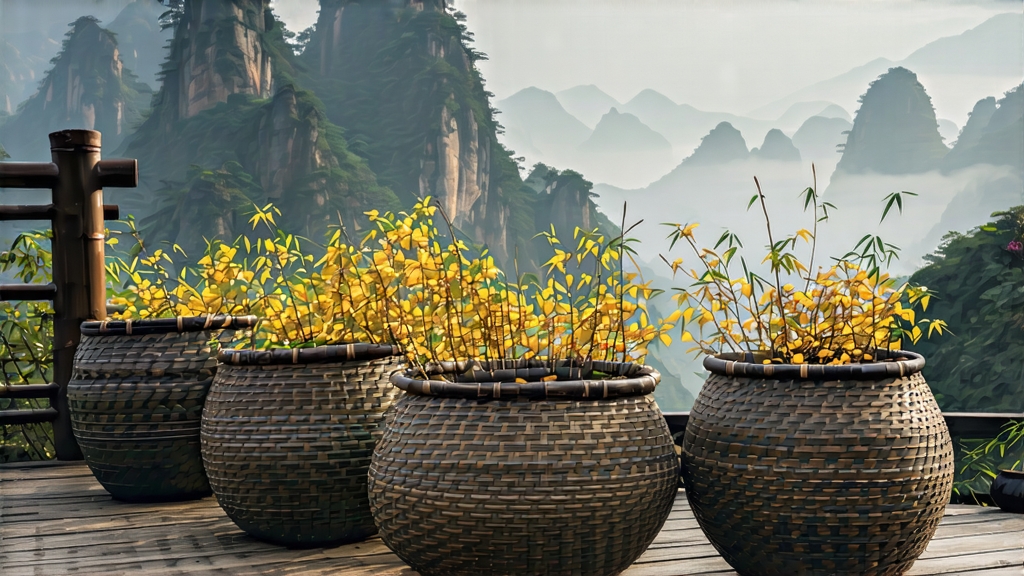
Tucked high in the mist-veiled Dabie Mountains of western Anhui Province, the small county of Huoshan has guarded a tea secret for more than 2,000 years. While the world celebrates Longjing, Keemun and Tieguanyin, local growers still speak in hushed tones of huangya—“yellow buds”—a tea so delicate that emperors once kept it under lock in the Forbidden City. Today that same tea, Huoshan Huangya, remains the most aristocratic yet least understood member of China’s six-family tea clan. To meet it is to step into a chamber of imperial memory, alchemy and mountain terroir.
A Brief Imperial Past
The first written record appears in the Han dynasty “Geographical Annals” of 104 BCE, which list “Huoshan tribute of yellow sprouts.” By the Tang (618-907) the tea had become a currency of diplomacy, traveling the Silk Road in pressed cakes alongside spices and silks. The Song court (960-1279) elevated it to “First Grade of the South,” and the Ming Hongwu Emperor (r. 1368-1398) decreed that only bud-grade leaves picked before the Qingming festival could enter the palace. Legend claims that when the last emperor Puyi abdicated in 1912, he carried a half-jar of 1890-vintage Huoshan Huangya into exile—perhaps the most poetic retirement package in tea history.
Terroir: Where Clouds Touch Granite
Huoshan county lies at 31° N, 800–1,200 m above sea level. The Dabie range traps humid Pacific air, creating 220 fog-bound days a year. The soil is Phyllitic granite rich in potassium and manganese, drained steeply so roots struggle, concentrating amino acids. Day-night temperature swings of 10–15 °C slow leaf growth, yielding buds no longer than 2.5 cm, clad in down so pale it looks platinum under dawn light. Only three valleys—Jinji, Taiyang and Jinjiazhai—produce the authentic “imperial bud,” a geographic footprint smaller than Bordeaux’ Médoc.
Varieties Within the Bud
Purists recognize three styles, all harvested within a manic 10-day spring window:
- “Golden Bud” (Jin Ya): 100 % single buds, needle-straight, downy, producing a liqueur the color of topaz.
- “One Flag One Shoot” (Yi Qi Yi Qiang): a bud clasped by an unfurling leaf, said to resemble an ancient banner and spear.
- “Small Orchid” (Xiao Lan): the rarest, where two tiny leaves wrap the bud like a tulip, releasing an orchid note that haunts the cup for minutes.
The Secret Menhuang Process
What nudges green leaf toward the yellow spectrum is menhuang—“sealed yellowing”—a step shared with other yellow teas yet refined here into high art. After a night withering on bamboo trays, buds are wok-fired at 85 °C for exactly 180 seconds, hot enough to kill grassiness yet low enough to preserve enzymes. While still warm they are wrapped in small linen bundles and stacked in a charcoal-heated bamboo chamber at 38 °C and 75 % humidity. Over 48 hours the leaf ferments micro-aerobically, chlorophyll degrades into pheophytin, catechins oxidize partially, and a unique polysaccharide forms, gifting the tea its hallmark “chestnut-honey” note. A second firing, gentler and shorter, locks in the color before the leaf is finally graded and rested for 30 days so moisture equalizes—patience no mass producer is willing to imitate.
Craftsmanship in Numbers
Master Chen Guohua, 72, is the fifth-generation keeper of the imperial recipe. He allows me to tally his spring: 4 kg finished tea per 50 kg fresh buds (a 12.5:1 ratio), 1,600 hand-turns per kilo during firing, and a 0.2-second window to judge the “popcorn crackle” that signals the first wok is complete. “Miss by a breath,” he says, “and you have expensive green tea.”
Brewing: Ritual for One
Western guides often underserve yellow tea, treating it like a shy green. Huoshan Huangya demands its own choreography:
Water: spring or glacier, 85 °C exactly; hotter scalds, cooler sleeps.
Leaf: